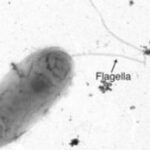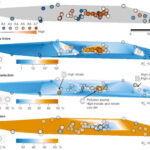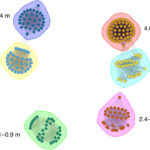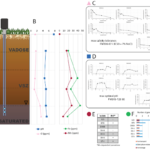 Lawrence Berkeley National Lab
Lawrence Berkeley National Lab
Earth & Environmental Sciences Area
Environmental Atlas Science Lead
rchakraborty@lbl.gov
(510) 486-4091
Romy Chakraborty is the Environmental Atlas Science Lead. The Chakraborty lab leads the Isolation and Enrichments tasks of Aim 2, our lab makes critical contributions to all three of the ENIGMA science aims.
We perform critical measurements on the quantity and quality of Carbon and Nitrogen in ORR groundwater and sediment to discern the various sources of carbon and nitrogen available to microbes, often employing synchrotron or stable isotope analysis.
We lead the development of new resources and techniques for enriching and bringing into cultivation key microbes from the ORR field site. These are both aerobic and anaerobic microbes that have been identified to be abundant, relevant, catalyze key metabolisms of interest at our field site. Working in collaboration with Deutschbauer, Arkin, Walian, and Northen labs, we characterize the unique phenotype and genotype of isolates of interest, working towards creating the ‘Environmental Atlas’. In the upcoming project period, we are developing experiments towards constructing stable SynComs and stable reduced consortia under relevant anaerobic conditions.
We are responsible for maintaining a well-curated ENIGMA isolate collection and routinely share isolates and their growth data across ENIGMA.
Relevant Publications
 Microbial Remains Shape Community Composition and Growth of Soil Microorganisms - The Science Microbes, which include organisms like bacteria, are tiny living things that inhabit virtually every environment on Earth. Soil microbes play a crucial role in breaking down organic matter and are crucial drivers of global nutrient cycles that support all terrestrial ecosystems. ENIGMA scientists studied what happens when these microorganisms die and leave behind remains known as necromass. After… More →
Microbial Remains Shape Community Composition and Growth of Soil Microorganisms - The Science Microbes, which include organisms like bacteria, are tiny living things that inhabit virtually every environment on Earth. Soil microbes play a crucial role in breaking down organic matter and are crucial drivers of global nutrient cycles that support all terrestrial ecosystems. ENIGMA scientists studied what happens when these microorganisms die and leave behind remains known as necromass. After… More → How Bacteria Adapt to Stress - Berkeley Lab researchers uncovered a distinctive adaptation that some bacteria use to quickly form protective communities called biofilms, which help them survive in adverse environments. The work could lead to better stewardship of areas with high levels of heavy metals, nutrients, or other forms of hazardous waste. More →
How Bacteria Adapt to Stress - Berkeley Lab researchers uncovered a distinctive adaptation that some bacteria use to quickly form protective communities called biofilms, which help them survive in adverse environments. The work could lead to better stewardship of areas with high levels of heavy metals, nutrients, or other forms of hazardous waste. More → Nuclear Waste Sites Yield Microbial Ecosystem Insights - In a flagship seven-year study, published this January in the journal Nature Microbiology, ENIGMA researchers explored how environmental stresses influence the composition and structure of microbial communities in the groundwater of the Oak Ridge Reservation (ORR), a former nuclear waste disposal site. More →
Nuclear Waste Sites Yield Microbial Ecosystem Insights - In a flagship seven-year study, published this January in the journal Nature Microbiology, ENIGMA researchers explored how environmental stresses influence the composition and structure of microbial communities in the groundwater of the Oak Ridge Reservation (ORR), a former nuclear waste disposal site. More → Microbial Communities Vary Widely Underground, Even When Close - Study finds that geochemistry and hydrogeology can influence community type and function, even when those communities are only 10 cm apart. More →
Microbial Communities Vary Widely Underground, Even When Close - Study finds that geochemistry and hydrogeology can influence community type and function, even when those communities are only 10 cm apart. More → ENIGMA researchers Win 2nd Annual BioEPIC SLAM - Adam Arkin, lead scientist, along with ENIGMA team members Bradley Biggs , a postdoctoral researcher in the Arkin lab, and Mingfei Chen, a postdoctoral researcher in the Chakraborty lab, recently participated in a virtual Research Slam promoting science related to the BioEPIC building. https://bioepic.lbl.gov/slam/ Results: Mingfei Chen (ENIGMA) took first place, Mo Ombadi (Watershed Function) second, and Bradley Biggs… More →
ENIGMA researchers Win 2nd Annual BioEPIC SLAM - Adam Arkin, lead scientist, along with ENIGMA team members Bradley Biggs , a postdoctoral researcher in the Arkin lab, and Mingfei Chen, a postdoctoral researcher in the Chakraborty lab, recently participated in a virtual Research Slam promoting science related to the BioEPIC building. https://bioepic.lbl.gov/slam/ Results: Mingfei Chen (ENIGMA) took first place, Mo Ombadi (Watershed Function) second, and Bradley Biggs… More → Discovering microbial adaptations to subsurface niches - Gushgari-Doyle, S; L.M. Lui, T.N. Nielsen, X. Wu, R.G. Malana, F.L. Poole II, M.W.W. Adams, A.P. Arkin, R. Chakraborty (2022) Genotype to ecotype in niche environments: Adaptation of Arthrobacter to carbon availability and environmental conditions. ISME Comm. [DOI]:10.1038/s43705-022-00113-8 OSTI:1860268 Different niche micro-environments can affect the structure and function of microbial communities. Terrestrial subsurface environments exhibit specific biogeochemical conditions associated with… More →
Discovering microbial adaptations to subsurface niches - Gushgari-Doyle, S; L.M. Lui, T.N. Nielsen, X. Wu, R.G. Malana, F.L. Poole II, M.W.W. Adams, A.P. Arkin, R. Chakraborty (2022) Genotype to ecotype in niche environments: Adaptation of Arthrobacter to carbon availability and environmental conditions. ISME Comm. [DOI]:10.1038/s43705-022-00113-8 OSTI:1860268 Different niche micro-environments can affect the structure and function of microbial communities. Terrestrial subsurface environments exhibit specific biogeochemical conditions associated with… More →